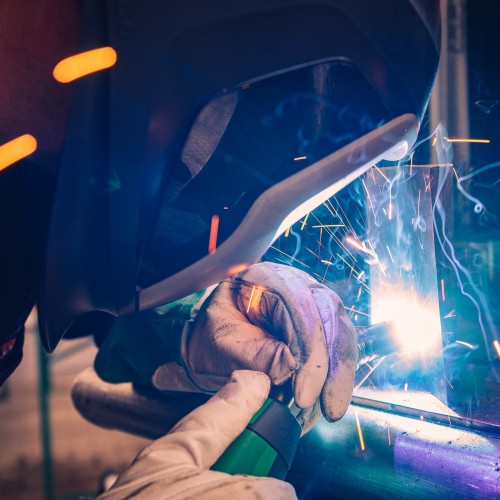
Posted on February-02-2020
Throughout welding history it was commonly thought that metals could only be welded to other metals, and glass only to glass; the two don’t usually weld together. However, researchers at Heriot-Watt University have developed a new, revolutionary technique that could allow glass and metal to be welded together. This is incredibly ground-breaking, and their development could transform the manufacturing industry completely. And particularly innovative for creating new products in the aerospace, defence, optics and healthcare industries.
“Being able to weld glass and metals together will be a huge step forward in manufacturing and design flexibility”, says Professor Duncan Hand in a press release issued by Heriot-Watt University.
The Heriot-Watt University researchers new technique was announced in March 2019. Their revolutionary technique involves using an ultrafast laser system that creates micro plasma (“tiny balls of lightning”) inside the materials and then fuses glass and metal together.
Currently, any equipment or products that have glass and metal and joined together by an adhesive. This ultrafast laser could change the industry in the future, meaning less of a reliance on adhesives.
The reason why metal and glass could not previously be welded together is due to their vastly different thermal properties. When heated or cooled glass and metal expand and contract at vastly different rates. If metal is heated and glass is melted onto it, the glass will shatter as the metal cools and contracts.
Manufacturers need an adhesive that bonds glass to metal, allowing the two to meet and be bound together. However, due to the expansion and contraction of metal it means that glass can move out of position and adhesives previously tested have a tendency to degrade over time.
The new ultrafast laser bridges this gap; it focuses on the area in which the glass and metal meet, creates a section of intense heat that melts both materials and joins them. The research team at Heriot-Watt University have tested welds at -50 C to -90 C and the materials remained intact. The glass was robust enough to handle the extreme conditions and not break.
With this in mind, the advancements in techniques and technology surrounding the welded together of glass and metal are definitely something to look out for in the future. We look forward to seeing how the manufacturing industry will change and develop with new innovative technology.
If you’re interested in hiring or purchasing welding equipment or tools, please don’t hesitate to get in contact with our helpful team by calling 0121 327 2249 or through filling out our online contact form.